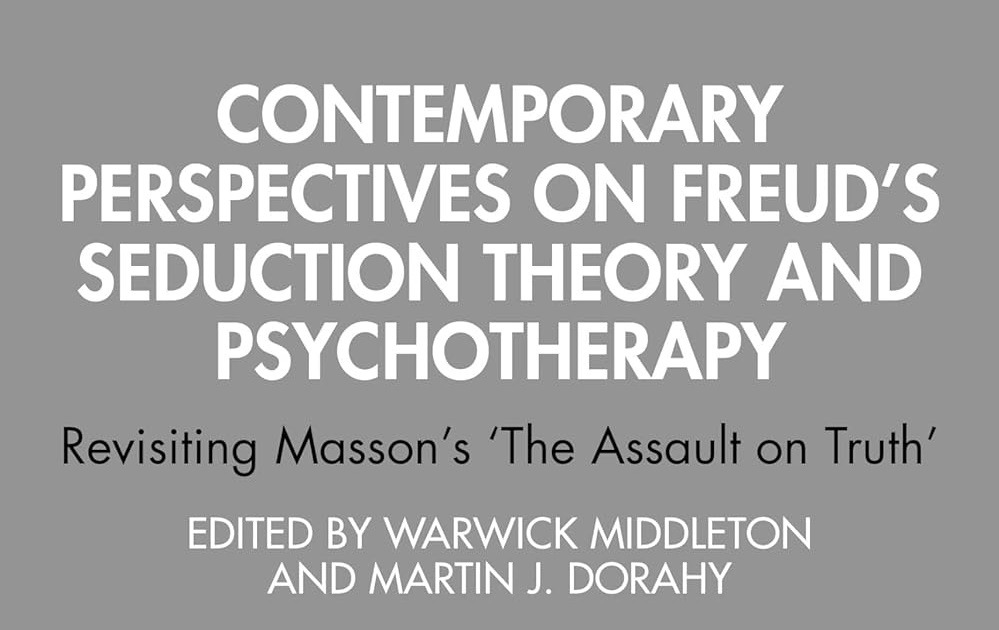On-demand Webinars
Our updated on-demand platform ensures an enhanced user experience, offering more than 100 webinars and short courses from global experts, with free and paid options starting at $9.99. All offerings include CPD certificates available for instant download after completing the assessment. Start learning today. eiseEducation On-demand webinars are hosted on Thinkific.com
Altered States of Consciousness and Psychotherapy
Dr Jamie Rickord
This two-part webinar series delves into the intersection of altered states of consciousness and psychotherapy. First part explores the history of psychedelic science, tracing the journey from William James’ self-experiments to 1960s research, and up to modern studies on the brain’s response to psychedelic states. Is the therapeutic effect of psychedelics purely due to their pharmacological properties, or is there a deeper, more complex interaction with psychotherapy itself? This session will examine how psychedelics might enhance therapeutic change through mechanisms like neuronal plasticity and a heightened awareness of internal processes such as dissociation or traumatic memory. In the second part the focus shifts to the French Surrealist movement, which sought to access the unconscious through pure psychic automatism, a concept influenced by Freud and Janet. With a critical perspective, this session will explore the role of naturally occurring altered states in therapy, alongside alternative theories on the transformative power of changing states of consciousness in the therapeutic process.
The Role of Shame in Cults, From Recruitment to Recovery
Daniel Shaw
Understanding the traumatizing narcissist’s relational system of subjugation is an important aspect of cult recovery work, for both the therapist and the cult survivor. In this webinar, Daniel Shaw describes the role of shame in the psychology of the traumatizing narcissist, and explains how shame is implicated in cult recruitment, in maintaining cult loyalty, and in the challenges of cult recovery. Cult survivors often resist self-referring for psychotherapy for fear they will not be understood. This webinar seeks to raise awareness within the psychotherapeutic community of the relational dynamics between cult leaders and followers, and of some of the central struggles for those recovering from cult-related trauma.
I-Thou Moment: Dialogue in Gestalt Theory
Dr Lynne Jacobs
Martin Buber regarded the I–Thou meeting as the most vital dimension of human experience, emphasizing that it is through authentic relationship that we become fully human. The I–Thou relationship is marked by mutuality, directness, presence, intensity, and a sense of the ineffable.
In therapy, the client–therapist relationship is seen as the foundation for all meaningful growth. It affirms the essential human need for connection, validation, and participation. Understanding the client’s subjective inner world is not a one-sided effort; therapists must remain aware of their own presence and influence, recognizing that both participants shape the psychological encounter. The I–Thou experience is a co-created relational event—it does not belong to either person alone, but arises in the space between them. This depth of encounter offers a transformative potential that goes beyond mere conversation.
In this 120-minute live webinar, Dr. Lynne Jacobs will guide participants in exploring how therapists can embody and model the I–Thou relationship in clinical practice. Drawing on Martin Buber’s dialogical philosophy, the session will highlight how this relational stance enriches therapeutic engagement.
Meaning, Purpose and Curiosity: Revolutionary Perspectives for Understanding and Healing Trauma (1)
Lisa King
Understanding trauma, and effectively healing trauma requires revolutionary perspectives of what it means to be human. Lisa King will challenge therapists to step away from their text books and out of their clinics to strip off the vestiges of pathologising power. This webinar demands that we turn current notions of mental illness on their heads. We must recognise symptoms of trauma and survival responses, often given labels like borderline personality disorder or bipolar disorder, as simply evidence of harmful experiences that need to be understood and given new meaning to heal.
In this webinar, Lisa will explore the impact of pathologising, dehumanising and disempowering discourse on public mental health, and the necessary therapeutic ethical stance to adopt to heal and empower traumatised clients. Loving curiosity, responsibility, kindness, compassion, playfulness, and perhaps one of the biggest superpowers – critical reflection, are considered essential tools necessary for destigmatising and healing symptoms associated with diagnoses such as dissociative identity disorder, and eating disorders.
Traumatic Narcissism and Recovery: Leaving the Prison of Shame and Fear
Daniel Shaw
In this webinar Daniel Shaw presents a new way of understanding the traumatic impact of narcissism as it is engendered developmentally, and as it is enacted relationally. Focusing on the dynamics of narcissism in interpersonal relations, Shaw describes the relational system of what he terms the ‘traumatizing narcissist’ as a system of subjugation – the objectification of one person in a relationship as the means of enforcing the dominance of the subjectivity of the other. Understanding the relational system of the traumatizing narcissist allows clinicians to help patients more clearly understand the nature of the subjugation trauma they have suffered. This webinar will include clinical material illustrating work with this population, and will be especially illuminating and rewarding for mental health professionals engaged in helping patients heal and recover from this form of relational trauma.
Dissociation & Dissociative Disorders: Past, Present, Future
Prof Martin Dorahy
Dissociative disorders have a rich history in medical literature, with dissociation itself once at the forefront of dynamic psychiatry. Influential figures like Pierre Janet, William James, Morton Prince, Carl Jung, and a young Sigmund Freud regarded dissociation as a crucial mechanism, reflecting a structured partitioning of the psyche. However, the focus on dissociation shifted towards other psychological forces—such as repression—and biological explanations for psychological distress. In the late 1970s, dissociation re-emerged with a broader conceptualization, bringing both new insights and some conceptual confusion. Recent frameworks have sought to address these complexities. This webinar will explore these evolving ideas in the context of modern understandings of dissociation and dissociative disorders. We will also focus on the challenges and methods of clinical assessment, and look ahead to future developments that may shape the treatment and conceptualization of dissociative disorders.
This webinar will explore key ideas from the 2023 book Dissociation and the Dissociative Disorders: Past, Present, Future, using its subtitle as a guide to structure of the presentation.
Hope, Fears and Enduring Relational Themes
Dr Lynne Jacobs
Enduring Relational Themes (ERT) are the emotionally charged hopes and fears that subtly yet powerfully shape how we engage with others—including how clients engage with their therapists. These relational patterns often form early in life and become part of the background that influences personality development, life choices, ambitions, and the quality of our relationships.
In therapy, ERTs come to the foreground through the client’s experience of the therapeutic relationship itself. Recognizing and engaging with these themes as they emerge in session can be transformative. They reveal how the client anticipates connection and vulnerability, and how they respond to presence, attunement, or distance in relational contact.
In this webinar, Dr. Lynne Jacobs will offer a detailed exploration of Enduring Relational Themes and their clinical relevance. Participants will gain practical insights into how to identify and work with these themes as they arise in the therapy process. The webinar will also include an opportunity for self-reflection, encouraging therapists to consider their own ERTs and how these may enter the therapeutic dialogue.
Understanding the Traumatic Narcissism Theory and its Clinical Utility
Daniel Shaw
Daniel Shaw introduced Traumatic Narcissism Theory in 2014, with the publication of his book Traumatic Narcissism: Relational Systems of Subjugation, in which he described the many ways that individuals are harmed in relationships with the person he termed the ‘traumatizing narcissist.’ Understanding the relational system of the traumatizing narcissist allows clinicians to help patients more clearly understand the nature of the subjugation trauma they have suffered. In this webinar, Shaw will focus on defining the terms and purposes of the theory, and he will explain how it can be integrated into any therapeutic modality when working with victims of subjugation trauma.
Personality Disorders - The Current State of Knowledge
Dr Joan Haliburn
Personality disorders are among the most prevalent and serious mental health conditions, yet they remain one of the least understood. These disorders can significantly affect the severity, treatment response, and prognosis of co-occurring mental or physical health issues. Despite their impact, many individuals with mental health concerns are not diagnosed with a personality disorder upon discharge from inpatient care, highlighting a critical gap in clinical practice. A personality disorder is characterized by persistent patterns of thoughts, emotions, and behaviors that diverge significantly from cultural expectations. This webinar will delve into personality disorders, presenting the latest knowledge on these complex conditions. Using case examples, participants will explore the role of trauma, attachment, and other factors in the development of personality. Attendees will gain insight into the three clusters and ten types of personality disorders and learn how these disorders often coexist with other mental health conditions, affecting both severity and treatment outcomes.
Relational Aspects of Intersubjectivity Theory and Gestalt Therapy
Dr Lynne Jacobs
Intersubjectivity Theory also posits a holistic view of human nature. The holism is reflected in the centrality of self structures and self-experience, which brings it close to Gestalt concept of organismic self-regulation. Importantly, Intersubjective theory also shares with Gestalt therapy an emphasis on emotion and emotional development as central to the development of self structures or the capacity for self-regulation.
In this webinar, Dr Lynne Jacobs discusses the relational concepts and perspectives from Intersubjectivity theory which may be used to build Gestalt theory. Dr Jacobs will define and describe certain concepts from Intersubjectivity Theory, and critique them for their relevance and applicability to Gestalt therapy.
New Directions in Self Psychology
Dr Daniel Goldin
In the course of this webinar, Daniel Goldin will first describe the twin pillars of Kohut’s theory: empathy as /the/ mode of observation and the self-object concept. Second, he will elaborate ways self psychology has evolved to become more relational and constructivist, with a particular emphasis on what he calls the narrative turn in self-psychology. The analyst doesn’t simply provide a mirroring function for the patient through the application of empathy. Rather, the analyst enters into a narrative dialogue with the patient about their experiences, in the present as well as in their life-world. Kohut believed people know themselves as whole in two ways: by feeling cohesive in the moment and continuous through time. Unity through time, what Kohut called ‘the curve of life,’ is always a narrative unity that takes shape through a circular process of telling and enacting, a looping effect that is at the heart of therapeutic action and can be considered a self-object transference in its own right.
The Quest for Self-Understanding in Philosophy and Psychoanalysis
Prof Allison Merrick
The famous Delphic maxim — “Know thyself!” — has been a guiding principle in both philosophy and psychoanalysis. Both disciplines agree that self-knowledge is valuable but often difficult to achieve. Even Socrates, in the Phaedrus, admits that he struggles with truly knowing himself: “I am not yet able, as the Delphic inscription has it, to know myself.” In this webinar, we will draw our resources from both traditions to examine why self-knowledge is so hard to achieve, to deepen our own self-understanding, and to devise some practical strategies for working with patients to deepen their own self-possession.
Addressing the Impact of Stigma in Therapy
Dr Kevin Keith
The shameful impact of stigma and stigmatisation regarding Mental Health (MH) remains severe, notwithstanding decades of research. Consequently this webinar endeavours to answer the meta-question “Where, how, and for whom do various forms of stigma and stigmatising appear in our work” and clarify the current state of knowledge on stigma and stigmatising, plus highlight important treatment implications for Mental Health (MH) practitioners.
Introduction to the Conversational Model of Psychoanalytic Psychotherapy Training (Free Webinar)
Dr Nick Bendit
The Conversational Model of Therapy (CM), which is also known as Psychodynamic-Interpersonal Therapy is an evidence based psychological treatment developed by Dr Robert Hobson and Prof Russell Meares. The model has demonstrated effectiveness in the treatment of depression, psychosomatic disorders, self-harm, complex trauma disorders, etc. In this webinar Dr Nick Bendit will describe the theoretical underpinnings of the model, clinical process and its efficacy in treating complex trauma disorders. The webinar will conclude with Q&A and provide an overview of training in Australia and New Zealand.
Lived Stories and Told Stories: The Looping Effect of Psychoanalysis
Dr Daniel Goldin
Before YouTube and TikTok, before books and poetry, before writing, humans put their stories together in conversation in order to share experiences and make sense of them. In our prehistory, the story never became a concrete artifact capable of being reproduced in a precise way and disseminated. It lived only in talk. And our ancestors continually tweaked their stories to meet current circumstances, to understand more and better, whether those stories were mythic explanations handed down from the past or current stories about the goings-on in contemporary life. Therapists and patients put together stories in a similarly dynamic way, intensifying a process we have engaged in since humans began to herd together on this earth.
We are able to know more about our experiences by telling about them because we act in a world made meaningful by the previous actions, symbols and stories of a multitude of other humans, past and present. We /tell/ stories because we are already entangled in stories. As the philosopher David Carr put it, ‘narrative is at the heart of human reality long before it gets explicitly told about. It is because of this closeness of structure between human action and narrative that we can genuinely be said to explain an action by telling a story about it.’ A ‘looping effect’ inevitably takes hold between telling and living when we engage in a storying way with others in conversation over time. When a child or a patient elaborates a particular situation with an important other, they are liable to experience similar future situations in a new way. They might respond in their bodies differently, perceive differently, discover different possibilities in the situation and act differently.Psychoanalysis can be conceptualized as helpful in many ways. But one primary mode of therapeutic action is due to a circularity between doing and telling, where each influences the other. In this webinar, Dr Daniel Goldin will explore this looping phenomenon and offer extended clinic examples.
Relational Somatic Beings – an exploration of the interdependent attributes of what it means to be human
Peter McKay
This webinar will open by delving into the relational and bodily aspects of Trauma Theory and Affect Theory, examining their connection to the human experience. Using that lens as a foundation, Peter will then focus on how this understanding can deepen the working alliance to become a therapeutic relationship. The exploration will cover the essence of how “being a human” might manifest, and the associated phenomenological processes that define it. The webinar will also shed light on the embodied/somatic relational dynamics that shape our individual and collective identities. Finally, Peter will investigate the interplay and influence of these complex dynamics, applying them to a hypothetical client scenario to deepen our comprehension of what “Relational Somatic Being” looks like during the therapy hour.
Body Dissatisfaction in Adolescents
Dr Joan Haliburn
In recent decades, body dissatisfaction in adolescents has received significant attention from clinical researchers. Anxieties and behaviours about weight, shape and size are major concerns for adolescents, and are considered to be one of the most influential factors affecting their psychological well-being. The origins are multifactorial – biological and sociocultural, driving internal narratives about how one is seen by others, as well as by self. Family factors such as Insecure attachment styles feature predominantly, while fears of rejection and abandonment which cannot be expressed, compound negative affect. Alexithymia as a construct must also be understood in the context of personality development and these resulting body image issues. In this webinar, Dr Joan Haliburn will discuss the etiological factors of body dissatisfaction and food restriction in adolescents, illustrating via clinical examples. Treatments will also be briefly looked at.
Emergent Systems Theory: The Psychotherapy of Personality Disorders
Prof Lisa Cohen
Gunfire, Humour & Psychotherapy
Prof Warwick Middleton & Dr Kris Rao
Join Professor Warwick Middleton and Dr Kris Rao for an engaging webinar that delves into the therapeutic potential of humour in psychotherapy, with a special focus on how cultural traditions shape our identities. Drawing from his Australian bush upbringing, Professor Middleton will explore how humour is an integral part of cultural heritage and its role in the healing process. Dr Kris Rao will discuss case studies of famous therapists who have skillfully used humour in their practice, as well as research on the use of humor in therapy. He will highlight its impact on building rapport, enhancing therapy, and fostering a positive therapeutic environment. The session will explore how humour can strengthen therapeutic relationships, examine its cultural mechanisms, and discuss its therapeutic effects. Key insights will include the importance of a therapist’s sense of humour in fostering trust, using humor respectfully to promote empathy, and how it can stimulate personal growth and understanding in clients.
Attachment Theory & Multiculturalism (Free Webinar)
Dr Kevin Keith
‘Robustness’ might be described as the ability to embrace greater complexity in the face of intractable either-or stalemates. Indeed, more recent approaches across both developmental biology and cultural anthropology—traditional opponents in the nature-culture, discover-construct skirmishes—have begun a more fruitful engagement. An example would seem to be the emerging for Attachment Theory and some sectors within Cultural Anthropology; they are seeking to combine attachment predispositions with greater ecological and contextual variability.
This one-hour webinar will offer a taste of the current state of empirical investigation of the caregiving sensitivity construct. On the one hand, this ‘mechanism’ has demonstrated causal efficacy in interventions with young children. On the other hand, such study has only provided a moderate potion of the attachment story. Equally, it remains predominately focussed on Western Middle Class nuclear family. So, what else might contribute to early security? Recent research in non-traditional settings would appear to be identifying patterns and forms of sensitivity in different family/community caregiving configurations as well as with previously less recognised contextual/ environmental influence
The Process of Clinical Reasoning: The Hierarchy of Engagement.
Dr Phillip Graham
Parallel Parent and Child Narrative (PPCN)
Dr Jackie Amos
Parallel Parent and Child Narrative (PPCN) is a story-based psychotherapy for verbal children and their primary caregivers, developed in New Zealand by early childhood educator and child therapist Heather Chambers. PPCN was developed to address the hurt that can accumulate in parent- child relationships in the face of intergenerational adversity and trauma. John Bowlby, the father of attachment theory, stipulated that to help distressed parents and children it was necessary to work with the parent and child in parallel, at the level of the internal working model. These two principles are at the heart of PPCN. Taking a strengths-focused approach, the PPCN therapist actively works to uncover the untold story of care and connection, hidden beneath the stories of trauma and distress, whilst also addressing traumatic memories. The parallel narrative sets the relationship on a new path, where understanding precedes action, and parents and children, together, find unique solutions to the shared challenges that they face.
Jackie trained in PPCN with Heather Chambers in 2003. Jackie and Heather still continue to collaborate, with Jackie researching the mechanism of action of PPCN in her PhD. PPCN has been central to Jackie’s Child and Adolescent Psychiatric practice for 20 years. She has successfully used, and trained others in PPCN at Child and Adolescent Mental Health Services in Southern Adelaide. Jackie has more recently supported the inclusion of PPCN into the suite of interventions offered in a family reunification service in Centacare Catholic Family Services. Heather and her colleagues enjoy success working with families in Child and Adolescent Mental health Services and private practice across New Zealand
In this webinar, speaking as highly-experienced PPCN practitioner and trainer (and mother-child relationship researcher), Dr Jackie Amos will discuss the importance of dyadic therapies for parents and their school age children, explain the role of the PPCN therapist, outline the PPCN process with reference to the postulated mechanism of action and talk about how PPCN has been used effectively in Child and Adolescent Mental Health Service, and in a Family Reunification Service in South Australia.
Paradoxical Theory of Change
Dr Lynne Jacobs
The paradox is that the more one tries to become who one is not, the more one stays the same (Yontef & Jacobs, 2008, p329).
Gestalt’s paradoxical theory of change suggests that when people allow themselves to be fully and aware in touch with who they currently are, change and growth then emerge as the inevitable and natural outcome of such contact and genuine self-knowledge. This view represents a radical shift from the more commonly accepted tradition of change which puts emphasis on upon client trying to change to conform. Working with paradoxical theory of change can be challenging for the therapist. The therapist needs to decline the role of traditional change agent and become an active partner to develop a greater awareness of all the forces in the field. In this webinar, Dr Lynne Jacobs will explain this Gestalt model of change.
Money Talks: Ethical & Clinical Issue of Fees in Therapy
Dr Kris Rao
In this webinar, Dr Kris RAO will review ethical and clinical principles around fees in therapy. He will discuss the protocols around deciding fees, raising fees, and managing fees in therapy. He will also review problems dealing with issues related to fees, and transference and countertransference issues arising out of fees.
Embracing the Plurality of Emotions and Affective Experience (Free Webinar)
Dr Kevin Keith
Emotions may indeed be one of the most common experiences in human life, but behind this more obvious reflection lies a rich, fascinating but deeply paradoxical landscape of empirical research. Indeed, the emotions may qualify as one of the Chalmer’s so-called hard problems in cognitive science, alongside mind-body relationship and consciousness. Nonetheless, this highly fluid terrain of emotion research offers mental health workers important depth, breadth and renewed hope when approaching client’s affective experiences, especially subjective states of meaning.
This 1.5 hour ‘emotions primer’ ambitiously seeks to offer practitioners at least three benefits. First, an up-to-date survey of current multidimensional research will provide an overview of both commonalities and important disputes in the field. What are these elusive phenomena that comprise emotional experiences? Included here will be a review of competing theories and the emerging consensus for a pluralistic based component model. Second, after this required conceptual heavy lifting, attention will turn to the central dilemma of unique individual meaning (referenced by the technical terms ‘intentionality’ or ‘aboutness’) versus physiological mechanism. Following an exploration of emotion dysregulation as a factor in psychopathology, focus turns to a surprisingly broad field of emotion regulation. Finally, the introduction of a practitioner’s checklist will offer viewers a chance to integrate the session’s content within their unique practice.
Emotions provide a model of how to embrace a pluralism in our work that may include both relief of suffering and enhancement of personal meaning.
When wounds from infancy collide; the intergenerational transmission of maternal neglect and abuse.
Dr Jackie Amos
This webinar will present an attachment-based model of intergenerational maternal neglect and abuse of children. The model integrates two novel hypotheses with existing evolutionary research in the areas of attachment and interpersonal trauma. The first hypothesis is that ‘shame-without-solution’ is as important as ‘fright-without-solution’ in understanding traumatising attachment relationships in infancy. The second addresses the controlling adaptations to traumatising attachments in middle childhood and the corresponding hostile, helpless states of mind in adults with histories of chronic interpersonal traumatisation in important caregiving relationships. These adaptations are increasing recognised empirically as integral to the transmission pathway, and although attachment theory provides an evolutionary explanation of development during infancy few attempts have been made to extend an evolutionary understanding to these important observations in middle childhood and adulthood.
Dr Amos will outline a second hypothesis that suggests as development proceeds, parents and children ‘utilise’ dominance and submission hierarchies conserved during evolution, to stabilise fear and shame without solution. The model has direct clinical utility and has been used to predict fundamental objectives of any effective treatment approach. These objectives provide a useful structure to guide intervention with families caught in distressing intergenerational cycles of relational trauma, neglect and abuse.
Attachment, Trauma, Personality in Addictions
Dr Joan Haliburn
The last decades have seen a substantial growth in studies on attachment and addictions. Similarly, the last decades have seen a substantial growth in studies on attachment and personality disorders. Despite, methodological problems, the link between insecure attachment and addictions today is well established. Attachment Theory describes different patterns based on different experiences in attachment relationships. Many of our patients are found incidentally to have addictions, others directly seek help for their addictions, and still others require specialized treatment centres. In all walks of life, and in all venues of work we encounter patients with substance abuse and addictions. Attachment Theory will provide us some avenues of understanding. Insecure attachments combined with early trauma provide the substrate for the development of personality disorders, and paths to difficulties in emotional regulation.
In this webinar, Dr Joan Haliburn will be discussing Attachment Strategies in more depth and the role of insecure attachments in substance use, polysubstance abuse, overeating, binge-eating and loss of control of eating as in aberrant patterns that characterize the binge-purge subtypes of anorexia nervosa-bulimia nervosa, and their compensatory behaviours.
What Color is your Grief?
Dr Paul Martin
Therapists often find that their bereaved clients struggle to cope with the death of a loved one in ways that vary greatly between individuals. One person may find it difficult to express the emotional facets of grief whereas another may have a hard time maintaining a meaningful connection to the deceased, and still another will stumble while adapting to changes in their family. A conceptual framework is needed to ascertain what specifically is off kilter and how the individual can cope more effectively with their particular challenges.
In this webinar, Dr. Paul Martin will discuss diagnostic categories that differentiate complicated bereavement from normal grief as well as William Worden’s task model of mourning and how individuals can benefit from managing specific components of the mourning process that are not unfolding well. He will then explore fascinating examples of grief rituals from cultures around the world that facilitate different aspects of mourning.
How does the body keep the score? Exploring an endocannabinoid system mediated mechanism in therapy.
Dr Jamie Rickord
Trauma increases vulnerability to mental illness and stress related psychopathology. Repeated and sustained activation of stress response systems exert ‘wear and tear’ on the body and brain, referred to as allostatic load, which results from the direct effects of persistent activation of the stress response, together with the loss of systems that normally oppose or buffer the stress response. This process of homeostasis will be discussed along with the concept of entropy in trauma, noting that the biological mechanisms that account for the observed changes in the body and mind, ‘how the body keeps the score’ remains inadequately defined.
Considerable pre-clinical data support critical roles for the endocannabinoid system and its main target, the cannabinoid 1 receptor (the most abundant G protein linked receptor in the mammalian brain) in the adaptation of the brain to repeated stress exposure. Endocannabinoids regulate affective states, participate in memory consolidation, retrieval and extinction and modulate the effects of stress on the brain and may have an important role in the biology of play. The endocannabinoid system is altered by exposure to trauma and current evidence indicates a link between the loss endocannabinoid system homeostasis and maladaptive brain changes after trauma and therefore a mechanism for ‘how the body keeps the score.’
Reversing the Developmental Sequence – the Psychotherapy of Depression
Dr Joan Haliburn
The concept of depression in earlier psychoanalytic writings pointed to its origins in narcissistic vulnerability, developmental trauma and conflicted anger which had no possibility of expression. Hostility directed inwards, childhood disappointment of healthy narcissistic strivings, loss of an important other who is ambivalently regarded, difficulties with self-esteem particularly when reliant on others for regulation of self-esteem, to traumatically un-empathic parenting resulting in chronic feelings of emptiness and depression; insecure and unstable parenting, rejecting and critical behaviour on the part of parents, leading to the developmental of internal working models of self as unlovable and inadequate and others as unresponsive and punitive, causing vulnerability to later adversity or loss, and seeing such loss as failure on one’s own part; chronic devaluation from caregivers, creating shame and depression.
In this webinar, Dr Joan Haliburn will discuss the psychodynamics and psychopathology of depression, the types of depression, role of shame and guilt, and describe an approach to psychotherapy and some of the difficulties one can encounter when treating depressed individuals.
Attachment Security & Therapeutic Relationship - a new experience.
Dr Joan Haliburn
The importance of the therapeutic relationship has occupied scholars, researchers and clinicians for decades; no consensus has been reached as to what comprises the therapeutic relationship; however, a substantial body of empirical research now supports its importance in predicting change in psychotherapy. Transference, countertransference, therapist ruptures and therapist self-disclosure, have been the basis of some studies attempting to describe the process of psychotherapy and the role of the therapeutic relationship, but each is subject to different variables, which need to be further studied. The concept of the therapeutic relationship went mainstream when it moved from psychoanalysis to the field of general psychiatry, namely goals, tasks and bonds and more recently to other approaches, where the relationship is now considered important.
Along with historical information, Dr Joan Haliburn will embark on another aspect of the therapeutic relationship which has not been pursued to any great length, and quoting Bowlby: “the psychotherapist may become a temporary attachment figure for the patient by becoming a reliable and trustworthy person in the patient’s exploration of his/her experiences – a secure relationship”. Dr Joan Haliburn will, with the use of case examples, explore this idea further, drawing from developmentalists – Daniel Stern, Colwyn Trevarthen, Michael Basch and her own interest in this area both as a psychotherapist and supervisor for more than 30 years, and raise discussion around attachment security and the therapeutic relationship – a new experience.
The Differential Diagnosis between Psychotic Disorders and Posttraumatic / Dissociative Disorders
Prof Andrew Moskowitz
When Eugen Bleuler created the diagnostic category Schizophrenia in 1908, psychotic symptoms were not considered a core component. Indeed, Bleuler recognized that trauma could cause some psychotic symptoms and that auditory verbal hallucinations could be dissociative in nature (Bleuler, 1950/1911). Unfortunately, these insights were soon forgotten, and for the past half-century, schizophrenia has been viewed as the paradigmatic psychotic disorder. Researchers and clinicians working with persons diagnosed with psychotic disorders rarely consider dissociative disorders, or even posttraumatic stress disorder, as a differential diagnosis. On the other hand, those working in the dissociative disorders field have long recognized that psychotic symptoms, including voice hearing, are common in dissociative disorders (Moskowitz, Mosquera & Longden, 2017). In this context, it is argued that dissociative and posttraumatic disorders are often misdiagnosed as schizophrenia, or other psychotic disorders, with profound clinical implications; importantly, while the treatment of choice for psychotic disorders has long been medication, intense psychotherapy is the treatment of choice for posttraumatic and dissociative disorders.
This webinar will present evidence for the above, along with explanations for the presence of psychotic symptoms in posttraumatic (including ICD-11 Complex PTSD) and dissociative disorders (Moskowitz, Heinimaa & Van der Hart, 2019). While the presence of psychotic symptoms is not useful as a differential diagnostic tool, certain aspects of delusions and hallucinations may aid in differential diagnosis. Dissociative symptoms provide a more solid foundation on which to distinguish between psychotic, posttraumatic and dissociative disorders; the most relevant dissociative symptoms in this regard will be highlighted. These clues to differential diagnosis, and the conceptual and clinical implications of these differences, will be discussed and important unanswered questions raised.
Supervision Masterclass: Process Supervision & Taped Supervision
Dr Nick Bendit & Dr Kris Rao
The significance of supervision in developing clinical expertise has been acknowledged since the inception of psychoanalysis. Freud hosted weekly evening meetings in his home, where he and other therapists discussed both theoretical and case-related topics, essentially conducting group supervision (Hess, 2008).
When practicing psychodynamic psychotherapy, supervision is essential. However, what happens during supervision is highly variable. In this Masterclass, Dr Nick Bendit & Dr Kris Rao will discuss ‘process supervision’, which is common to most psychodynamic models, as well as cover ‘audio tape supervision’, which is somewhat unique to supervising the Conversational Model (CM) practitioners. The webinar will emphasise managing both difficult clients and supervisees, along with other clinical challenges encountered in the supervisory relationship.
Understanding and Working with Voices from a Dialogical Perspective
Prof Andrew Moskowitz
For the last half of the 20th century, under the influence of the German psychiatrist Kurt Schneider’s conception of auditory verbal hallucinations as a first-rank symptom of schizophrenia, voice hearing was considered a core psychotic symptom, pathognomic for schizophrenia. However, over the past few decades, this position has been challenged. Research has demonstrated voice hearing to be diagnostically non-specific, common in the general population, and strongly linked to dissociation. According to this view, voices derive from life events which are often traumatic in nature; undermining the concept of ‘pseudo-hallucinations’, the experience of voice hearing appears indistinguishable between groups.
The clinical implications of this changing position on voice hearing have been increasingly recognized. Since voice hearing is now seen as on a continuum with the dissociative identities in dissociative identity disorder (DID), and therapeutically engaging with different dissociative parts has been a cornerstone of DID treatment, clinicians have begun to explore dialogical approaches to working with voice hearers. These approaches – in which the therapist and/or voice hearer has conversations with voices with the goal of improving their relationship (not getting rid of the voices) – will be discussed and the rationale explained. One promising approach called ‘Talking with Voices’, aligned with Compassion-Focused Therapy, will be presented in some detail, as it has been the focus of a series of impressive research studies. At the end, we will consider the implications of this viewpoint on the nature of human personality and identity – whether the notion of a unitary self might be an illusion.
Psychotherapy In Troubling Times (Free Webinar)
Dr Kevin Keith
We live in troubled times, perhaps very troubled times. This webinar focusses on recognition of the dark clouds that may blur our horizons. How might we feel when considering pressing global imperatives — avoiding climate disaster, reversing accelerating inequality, combatting terrorism, ridding our communities of historical racism, and halting this century’s general decline in democracy? Acute and chronic fear, pervasive uncertainty and near paralysis may represent unavoidable but also dangerous byproducts. Not surprisingly, conducting therapy in these troubled times may also require something extra from each of us. The presentation offers an opportunity to reflect and clarify what that extra might be for each of us.
The webinar also provides an application of three key writings from Erich Fromm to address this challenge: Escape from Freedom (1941); The Art of Loving (1956) & The Art of Listening (1994). Of particular interest are his noted reflections hatred and authoritarianism, as well as his clinical emphases on loving and listening. The latter are particularly valuable when seeking with our clients ‘to look safely and not compulsively look away’. How do we care for healthily love our selves? Practical options for self-care will be explored, including aesthetics, spirituality, meaning-making, titrating our engagement with the news.
The Psychotherapy Process: Considerations of Phase Approach
Dr Joan Haliburn
There are hundreds of psychotherapy modalities practised all over the world. Consequently, which primary considerations comprise Psychotherapy, and how it works (versus how well it works) are often-asked questions. In this webinar, Dr Joan Haliburn will attempt to answer those two questions by discussing psychodynamic psychotherapy processes, as viewed through the Conversational Model lens (aka Psychodynamic Interpersonal Therapy). Given that patients/clients come to psychotherapy with a wide range of problems and an even wider range of unique life histories and experiences, ideally psychotherapists need to tailor their therapy approach to their patient’s needs. Notwithstanding such tailoring, there are some presentations that are amenable to commonality in approach. For example, trauma is prevalent in many life histories, therefore during the assessment we heed the client’s frailty, their readiness to form a therapeutic relationship, and their capacity to “work through” defences, plus their propensity to change. These (and other) factors influence how we adapt a general therapy to the client, for no two therapies are alike.
Dividing psychotherapy into notional phases is a process-oriented way of demarcating key therapeutic tasks that both client and therapist hold in awareness. Therefore, division into an Early Phase including Assessment; A Middle Phase aka “Working Through”; and a Late Phase aka Integration, generally leads to positive outcomes. Dr Haliburn will describe how the Conversational Model (PIT) optimises each of these three phases, some typical interventions utilised in the Conversational Model, and the reasons for those interventions. Topics included are the therapeutic relationship, transference and countertransference, disjunctions and repair, impasses and ways to move through them, fear of traumatic repetitions that inherently inhibit client change, therapy separations and endings/termination.
Case formulation: Options, engagement and (unavoidable) limitations
Dr Kevin Keith
This webinar explores case formulation as a vital but complex skill in mental health practice, tracing its roots in medical science and examining its challenges in psychotherapy. It reviews five key difficulties outlined by Eells (2007), considers cultural and contextual factors, and addresses the lack of consensus in multi-modality practice. The session concludes with a practical exercise, applying different formulations to a single case from four therapeutic perspectives—CBT, third-wave therapies, psychodynamic, and humanistic—to highlight each approach’s unique contributions.
Understanding Dissociation (Free Webinar)
Dr Nick Bendit
Dissociation is a relatively obscure and often misunderstood area of mental health, surrounded by mystery and controversy. However, over the past decade, there has been a growing body of literature exploring its scientific and clinical aspects. It is far more common in everyday mental health than many realize and can significantly influence treatment outcomes across various psychiatric disorders. This 90-minute webinar explores what dissociation is and how it presents, provides a brief overview of the cognitive science behind both normal and pathological dissociation, examines its role as an adaptive mechanism in human evolution, and discusses its relevance in conditions such as PTSD, borderline personality disorder, and dissociative identity disorder.
Youth Interrupted – Social Anxiety Disorder during Adolescence: Co-morbidity & Sequalae – treatment principles.
Dr Joan Haliburn
Since the notable paper in 1985 by Liebowitz et al, the scholarly literature still invokes their phrase “the neglected anxiety disorder”, when speaking of social anxiety (and social phobia). That is because the condition is still comparatively under-recognized and undertreated, with limited ongoing clinical research. Irrespective of which theoretical/clinical development lens is used, adolescence encompasses approximately a crucial decade of a person’s psychology that can be compromised, and even interrupted, if Social Anxiety is not correctly diagnosed and treated early.
A combination of genetic, heritable, temperament, and attachment-specific interactions play a part in the aetiology of the condition. The emotional, social, academic, and behavioural impact of non-treated Social Anxiety Disorder typically results in depression, withdrawal, suicidal ideation, self-harm, eating disorders and related sequelae. Consequently, careful assessment, competent diagnosis, and specific/targeted therapeutic strategies are required when working with adolescents struggling with Social Anxiety Disorder.
In this webinar on Social Anxiety Disorder, Dr Joan Haliburn will discuss the prevalence, aetiology, assessment, diagnostic criteria, and developmental impact of the condition. She will then delve deeply (using vignettes and case studies), into the importance of early intervention and key psychotherapy treatment principles.
What’s in a Name? Trauma, Complex Trauma, Posttraumatic Stress Disorder, Complex PTSD and Borderline Personality Disorder – The Differences
Dr Joan Haliburn
In this webinar Dr Joan Haliburn will attempt to clarify the differences between these terms often subsumed in the term Developmental Trauma Disorder. She will elaborate the aetiology, developmental lines and symptomatology presented and the importance of elucidating these in anyone who presents with a history of trauma. Dr Haliburn will also touch on the history of how BPD began to be seen as a pejorative label by some, with attempts to replace it with PTSD, only to be debated as being too simple when complex trauma was involved, changing this to Complex PTSD. This is a compromise diagnosis – it does our patients a dis-service depriving them of appropriate treatment, which she will discuss with case excerpts.
Trauma, Dissociation & Violence
Prof Andrew Moskowitz
Almost 20 years ago, psychologist Andrew Moskowitz published a pair of articles on the relationship between dissociation and violent crime (Moskowitz, 2004a, 2004b). At that time, the relevance of trauma to violence had been recognized (e.g., The Cycle of Violence, Widom, 1989), but the important corollary role of dissociation had hardly been noted. In these two articles – a broad review of the relationship between dissociation and violence and an analysis of the role of dissociation in different types of offenders – a range of important issues were considered, including: a) the prevalence of dissociation in violence, b) the frequency of amnesia after violent crime and its relation to dissociation, c) violence committed by individuals with dissociative disorders, d) dissociation as a mediator between childhood trauma and adulthood violence, e) peri-traumatic dissociation during violent episodes, and f) the role of dissociation in violent fantasies and Amok-style mass murders. Since 2004, these two seminal articles have been referenced hundreds of times in subsequent reviews and empirical investigations. The continued relevance and importance of the issues raised there will be discussed in the context of recent research and publications, along with implications for research, clinical work and forensic evaluation. Prof Andrew Moskowitz will provide a comprehensive overview of the links and overlaps between the trauma, dissociation and violence.
Mechanisms of Change in Psychotherapy: What Actually Helps Clients Get Better
Dr Nick Bendit
Despite the fact that we know psychotherapy is effective across a wide range of mental health disorders, the mechanism of change is unknown. Each model of psychotherapy has a different theory about how change occurs, yet these theories do not explain why different therapies usually end up with similar outcomes. In this webinar, Dr Nick Bendit will outline a hypothesis that is central to all models, whether they recognise it or not, as a mechanism of change, mediated through the therapeutic relationship, which helps the client to experience emotions and thoughts that were unmanageable previously, and therefore avoided in a wide variety of ways. Different models address this with different techniques, implicit and explicit, but at the core is the safety and human contact of the therapeutic relationship. This, combined with the therapist modelling that emotions are important, tolerable and make sense, allows the client to explore their internal emotional world in a new way. A new relationship to their internal emotional and cognitive world is gradually built, allowing the client to live their life with more control, freedom and comfort.
Beyond Death: Incest that continues into adult life.
Prof Warwick Middleton
In some ways, ongoing incest during adulthood constitutes the last frontier in our awareness of extreme and enduring trauma. It has existed as something referred to occasionally in clinical anecdotes, and any form of systematic study of this form of trauma has come very late. That delay suggests an extension of society’s reluctance to accept the reality of the widespread nature of incest itself. Extreme incestuous abuse, though published in the popular press is often underreported. According to research (Middleton, 2013), one in eight adults with a diagnosis of dissociative identity disorder were in a situation where they were incestuously abused as adults. Because it is under-reported, practitioners may suddenly find themselves caught unaware when a client trusts them enough to disclose that abuse. Their disclosure will have clinical implications for such practitioners.
This webinar positions ongoing incest during adulthood within the spectrum of extreme trauma and highlights the reality that almost inevitably it also encompasses, some variant of organised abuse. Victims of ongoing incestuous abuse that extends into their adult years, inevitably satisfy diagnostic criteria for dissociative identity disorder (usually in its more extreme forms). In this webinar, Prof Warwick Middleton examines the phenomenology and abuse profiles of such victims, exploring how therapists can work with such challenging clinical cases.
Eating Disorders in Adolescents
Dr Joan Haliburn
Eating Disorders are common in Australia. The conceptualization of eating disorders has expanded rapidly in the last ten years to include binge-eating disorder (BED) and Avoidant-Restrictive Food Intake Disorder (ARFID) in addition to the existing Anorexia Nervosa (AN) and Bulimia Nervosa (BN). Adolescence is occurring much earlier nowadays and includes children from 10 to 18 years of age and is a time for first occurrence of any of these eating disorders. They are characterised as disabling, chronic and relapsing conditions with high relapse rates, particularly for those treated as in-patients. In this webinar, Dr Joan Haliburn will discuss the clinical features of these disorders and emphasise the need for their early recognition as well as their co-morbidity, the latter often leading to failures in treatment if unrecognized. Treatments will be briefly looked at, and there will be time for discussion.
.
Six Aspects of Somatic Psychotherapy
Peter McKay
This webinar explores six well recognised principles of Somatic (bodily-oriented) Psychotherapy. We set the scene by looking at the history of the body in psychotherapy where we will explore the theories philosophy, and practice of bringing the body into the therapy room. In the next sections we will look at the relationships between the body and contemporary trauma theory, self psychology, interpersonal neurobiology, and relational psychotherapy.
In each of these sections, theory, practice and embodiment will be considered by looking at key theories, concepts and practice. By identifying fundamental aspects that relate to somatic ideas, these relationships will be illuminated and expanded upon. We close with a view of where Somatic Psychotherapy is heading, relative to where it is now, thereby offering possibilities for how this integrative approach may inform your practice.
Childhood Experiences and Delusions: Trauma, Memory and the Double Bind
Prof Andrew Moskowitz
Delusions are the paradigmatic symptom of psychosis, the essence of irrationality. And yet, is there a way in which they could be understood? If we knew what a person experienced in their early childhood, could we possibly understand their delusional beliefs? This is the thesis put forward in this seminar. Beginning with a discussion of the flawed concept of delusions, we look at the nature of traumatic memories and empirical evidence that delusions can be linked to (adult) traumatic experiences. Pushing back to early childhood, we look at the complicated question of infantile amnesia and the psychological impact of disorganized attachment experiences. The concept of the double bind is also introduced, in a discussion of the psychological purposes that delusions may serve. As an illustration of these ideas, the case of Judge Daniel Schreber, whose father was a famous German pedagogue, is presented; his ‘memoirs’ of his psychosis were analyzed by Freud, Lacan and others to support their theories of mental illness. Others have recognized in Schreber’s delusions the symbolic expressions of experiences of childhood abuse. Finally, the therapeutic implications of these ideas are explored – can delusions be alleviated by accessing memories of the experiences on which they are based?
Contextualism in Therapeutic Practice: Working Intersubjectively
Dr David Schreiber
Psychoanalytic theory is continually evolving, with deep and lasting changes regularly occurring in the way clinicians conceptualize psychopathology and treat patients. Intersubjective-systems Theory (otherwise known as Phenomenological Contextualism) has played a major role over the past four decades in bringing attention to the contributions of both the analyst and the patient in the clinical setting, cementing into place the two-person psychology mindset which has been concurrently (and at times conjointly) developed in the broader, contemporary, relational psychoanalytic tradition.
As developed by George Atwood, Bernard Brandchaft, Donna Orange, Robert Stolorow and many other collaborators, Intersubjective-systems Theory has evolved more recently into both a philosophically-influenced understanding of the psychoanalytic process, and a reconsideration from a contextualist and phenomenological perspective of all the major themes in psychoanalytic treatment, including unconsciousness, trauma, psychoanalytic action and affective experience.
In this webinar we will explore the theory itself, along with consideration of the practical implications for treatment. We will also take into account the broader context of the development of psychoanalytic theory, and where Intersubjective-systems Theory differs, and is similar to, other contemporary psychoanalytic models.
.
Short Term Dynamic Interpersonal Psychotherapy (STDIP)
Dr Joan Haliburn
Based on the Conversational Model, and on a long history of short- term dynamic psychotherapies, Short Term Dynamic Interpersonal Psychotherapy (STDIP) is an integrated, contemporary, relational and dynamic model, suited to the needs of adolescents and adults who present with anxiety and depression and associated relational difficulties. It is also trauma-informed and can be successfully used in those with suicidal ideation and self-harm. As an active, structured, flexible, phase-oriented, focussed and time-limited approach, STDIP provides therapists with additional skills to work with individuals in a goal-oriented manner. STDIP has been proven to help such individuals in 10-20 weekly 50-minute sessions.
In this webinar, Dr Joan Haliburn will introduce Short Term Dynamic Interpersonal Psychotherapy (STDIP) using case examples.
Engaging Men in Therapy: What the Literature Says
Zern Liew
Men and boys represent 50% of the population who may be overlooked by the therapy industry. The APA released their first ever guidelines for working with men and boys in 2019 – not even five years ago. The level of psychological distress experienced by men appears to be increasing. Suicide levels remain unacceptably high. Men appear less willing to engage with health practitioners. This is especially so when it comes to mental health services. Most practitioners are women. It is not unusual to encounter those who believe that men are alexithymic and uncooperative clients. Men harbour fears, misinformation, and unhelpful beliefs about therapy. This webinar presents what the literature says about men and therapy. Understanding how men cope and seek help is important for practitioners who are serious about serving this population.
Complex Dissociation: The challenge of developing collaborative relationships between therapist & the patient & among the dissociative parts of the personality
Prof Onno van der Hart
Chronic childhood abuse and neglect can be understood as severe attachment or betrayal trauma because it usually occurs in the intimate [trust-based] relationships of parents and/or other caretakers. Consequently, a child may develop so-called disorganized attachment (DA) and/or a complex trauma-related dissociative disorder. In adulthood, those conditions can compromise other intimate relationships, as well as challenge the therapeutic relationship. Dissociative disorders are understood as a division of the personality into distinct dissociated parts. Each part has its own first-person perspective, whereby DA can be understood as [those] different parts perceiving intimate relationships differently, i.e., either as [desperately] longed-for, or as [extremely] dangerous. Those perceptions may test the therapeutic relationship, evoking severe approach/avoidance conflicts among these parts.
Clinical experience has taught us, in such cases, it is better to strive for a collaborative therapeutic relationship—also as a model for fostering collaboration among dissociative parts. In this webinar, Dr Onno van der Hart will discuss the clinical challenges of working with Complex Dissociation, with parts integration as a major therapeutic goal.
.
The Shameful Self - Its Restoration In Psychotherapy
Dr Joan Haliburn
Shame is Relational. Shame can be seen as a spectrum of feeling – embarrassment, shame, humiliation, mortification – and is different from guilt. Why a spectrum? When you look at shame that one feels because you judge yourself as inadequate it is qualitatively different and has different implications from the shame caused by sadistic abuse. Embarrassment is mildly related to shame, and mortification is at the level of wanting to die, in the moment of shaming. Guilt does not weigh in about one’s self-worth, its about regretting something one has said or done. Contempt and grandiosity are both reactions to actual or potential shaming and loss of sense of self. Contempt for self – that self is less than worthwhile is often difficult to hear and seemingly impossible to challenge.
When we look at Shame as a spectrum, we are better able to tailor our reflections in a proportionate manner and appreciate the extent to which physiology and affectivity are highly linked. As therapists we need to take care to be in a certain frame of mind, create a shame-free frame, with empathy and a sense of not knowing, being non-judgemental, aware of our own shame, and a readiness to create a right-brain interaction, in order to give Shame, light and air (DeYoung, 2015) and restore in varying degrees a sense of Self.
In this webinar Dr Joan Haliburn discuss Shame, the spectrum of Shame, identifying and working with shame in psychotherapy. Dr Joan Haliburn will also look at what happens when Shame is Dissociated or when Shame blocks the process of therapy, and how one proceeds to rectify this and restore Self.
Anxiety and Somatic Symptom Disorder in Adolescence
Dr Joan Haliburn
Anxiety disorders are more prevalent than depression during adolescence, a time marked by significant developmental tasks, hormonal changes, and physical growth often referred to as a unique developmental period. Separation anxiety is the earliest form of anxiety and a core issue to recognise in all psychotherapies.While some degree of anxiety can be protective, it can lead to further symptoms when normal discomfort and bodily sensations are misinterpreted – particularly when preoccupation with morbid thoughts and fears occurs concurrently. Consequently, it is essential to differentiate between various types of anxiety disorders, as each requires a distinct therapeutic approach.
Without intervention, anxiety symptoms can amplify, intensify, and persist. Untreated, Somatic Symptom Disorder (previously known as Somatization Disorder) may develop as a key manifestation of prolonged anxiety. In this webinar, aspects of differentiating and treating these different types of disorders will be explored via representative case examples.
Language Games and Psychotherapy
Dr Darren Haber
All language, including that of emotionality, assumes meaning within specific contexts and instances of use. Our understanding of emotional experience takes shape via mutually created language games that are intersubjectively situated; we learn spoken meaning in lived contexts. But what happens with patients raised in accommodative or misattuned surrounds, coerced into speaking the scripts of others—alienated from their own mother tongue? Here the therapist may also find themselves estranged, from familiar language worlds of empathic attunement and curiosity, shunted aside in favor of spoken prescriptions or metaphysical ‘cures.’ ‘Talk therapy’ is a misnomer; we are attempting nothing less than transforming patients’ ways of living, a context lived rather than distantly described or conceptualized.
In this webinar Dr Darren Haber will explore how Wittgenstein revolutionized our understanding of language, underscoring its bewitchment via our intelligence, when words and phrases carry assumed ‘truth’ through repeated use and familiarity. He will introduce new ways of thinking about the language world of patients, and what hidden assumptions may be at play in what is or is not being said; describe how both participants are vulnerable to reifying bewitchment; and examine how our own theoretical languaging can make us susceptible to becoming frustrated, confused, or otherwise frozen in dyadic processing.
.
Working Psychotherapeutically with Borderline Personality Disorder
Dr Joan Haliburn
Borderline Personality Disorder is the most researched of all the personality disorders, the most prevalent, with rates of 10% in outpatient and up to 20% in in-patient settings. There are many models of psychotherapy designed to work effectively with Borderline Personality Disorder. However, they have more similarities rather than dissimilarities and in general traverse the same paths. To work effectively with Borderline Personality Disorder the therapist must be prepared to deal with rather difficult transference and countertransference situations, and the complexities of the psychodynamics situated therein.
In this webinar Dr Joan Haliburn will discuss that single mechanism theories are insufficient, that co-morbidity must be taken into account, and that the forming of the therapeutic relationship – the singular necessity – depends on an understanding of attachment not only in the formation of the therapeutic relationship with safety and security, but also its effects on how the patient relates with the therapist and what the therapist must do in the face of sometimes inexplicable reactions and interactions.
.
Vulnerability Grandiosity Related Forms of Narcissistic Personality Disorder
Dr Joan Haliburn
‘SELF’ and ‘SELF AND OTHER’ are inseparable – whether in early development, or in the psychotherapeutic relationship. Developmental Theory is a Relational Theory and forms the basis of most psychodynamic psychotherapies. The term narcissism is most often regarded as a triad of vanity, exhibitionism and arrogant ingratitude, but it also needs to be seen as a state of developmental arrest, vulnerability, where the sense of SELF lacks sufficient inner resources to give meaning to life, simply through living it fully. The role of relational trauma needs to also be understood in the precocious attainment of autonomy, early idealization and identification with the other, seen in the developmental psychopathology of some narcissistic personality disorders. They occur on a spectrum and cannot all be lumped together. We must develop this understanding in the psychotherapy of Narcissistic Personality Disorders.
In this webinar, Joan Haliburn presents a developmental understanding of Narcissism and Narcissistic Personality Disorders and the complexities of psychodynamic psychotherapy in these disorders.
Prof Melanie Turner on Demystifying Voluntary Assisted Dying (Free Webinar)
Prof Melanie Turner
Voluntary Assisted Dying (VAD) is now a pathway of health care available in all Australian States and in New Zealand. The laws are similar Australia-wide, but differ slightly in each State, applying to people who have an incurable, advanced and progressive disease, illness or medical condition, and are experiencing intolerable suffering from that. In this webinar, Prof Melanie Turner will disambiguate the facts and myths surrounding VAD, covering key aspects including a summary of each region’s legislation and key differences; how the VAD process works and how people access it; the diverse teams of health-care professionals who provide VAD; what families and clinicians say about being engaged in the VAD process; as well as areas which need further considerations. The psychiatry/psychology view of ethics, neutrality and possible values-clashes, as well as grief and loss are also covered.
Contemporary Perspectives on Freud's Seduction Theory & Psychotherapy: Revisiting Masson’s ‘The Assault on Truth
Various
A panel comprising of Prof Warwick Middleton, Prof Martin Dorahy, Prof Jennifer Freyd, Dr Rick Kluft, Dr John Read, Prof Christine Courtios, Kate McMaucgh & Prof Bruce Cohen delve into the historical and contemporary implications of Freud’s seduction theory, particularly through the lens of Dr Jeffrey Masson’s seminal work, The Assault on Truth: Freud’s Suppression of the Seduction Theory. Dr Jeffrey Masson provides the background to his controversial book ‘The Assault on Truth: Freud’s Suppression of the Seduction Theory’. Dr Kris Rao facilitates the session.
.
The Highly Sensitive Person—Has mental health treatment been missing something?
Dr Kevin Keith
In 1997, Elaine and Arthur Aron introduced their initial research on the Highly Sensitive Person (HSP). They investigated individual personality differences in both explorative and inhibited responses to the environmental stimuli, especially in the context of adaptive human health. Research suggests HSP individuals may potentially represent 20% of the human population. At the same, the HSP presentation has correlated with higher adult mental health risk—stress, ill health and lower life satisfaction—and is hypothesised to be present in 50% of adult individuals who may struggle with mental health. There are also positive aspects—HSP’s may respond quite well to supportive environments—but these aspects has not yet been well-researched.
The session will consider questions along three lines of enquiry:
• First, the discussion looks at conceptual issues—past and present. What exactly is the current view on the “contents” of the HSP? What are its sub-facets and cohort clusters? Measures? How does it compare to other personality approaches?
• Second, what has the HSP research demonstrated in terms of mental health risks and possible therapeutic implications? What does it mean to say that an HSP is more sensitive to both negative and positive changes in environments? How exactly has therapy with managed? A case example of HSP informed therapy will be provided.
• Third, what might be the benefit and challenges of embracing trait or temperament considerations? How might we avoid ‘trait fatalism’, whereby clients’ sense of agency might be enhanced? Why has the field of therapy shied away from trait notions? Can we integrate into our current practices?
The webinar asks, have we missed something here? The answer is probably less definitive, but the field definitely merits our attention!
Dr Nick Bendit on Trauma and Memory Systems
Dr Nick Bendit
Direct-to-Consumer (DTC) digital psychotherapy services have emerged as a way to improve access to mental health care. However, these services lack adequate regulation, raising concerns about safety, privacy, and accountability. This webinar explores the ethical challenges posed by DTC apps that connect consumers to therapists worldwide or rely on artificial intelligence. The webinar will also discuss therapists’ responsibility when using DTC apps
(Non-artistic) Creativity in Therapy.
Zern Liew
Creativity is an innate human trait. For good and bad, it has enabled us to adapt the world to our needs and open up new frontiers beyond our planet and within our minds. Influential thinkers in therapy have referred to creativity. Carl Rogers said the manifestation of creativity is a sign of a well-functioning person. Irvin Yalom approached therapy as a spontaneous creative process. Gerard Egan, among many others, noted that therapy is both an art and a science.
Creativity is not the exclusive domain of the creative arts therapies. It is a cognitive activity applicable to problem-solving, adaptivity, playfulness, and innovation. Many talk (ie non-art) therapists are probably already using creativity unconsciously in their work. We all can direct and leverage creativity in our work without having to become “artistic”. This webinar will introduce you to creative problem-solving, creative responding, and creative methods you can start to use in your talk therapy practice. (Note: this webinar is not about the creative arts therapies and does not discuss art practices.
.
Dr Nick Bendit on Working with Chronic Suicide Ideation (Free Webinar)
Dr Nick Bendit
Probably the most difficult patient to provide therapy to is the one who is chronically suicidal. We worry about many aspects of their care, because a patient’s death suicide is one of the worst things we can face. First, and foremost, we want to help our patients, and a death by suicide is the most concrete manifestation that we haven’t.
Not only do we feel we failed them, but we are likely to question our own competence, and the rest of the world is likely to question our competence and the therapy we delivered. This includes family and friends of the patient, our colleagues, the public, and the legal system. This underlying anxiety when working with the chronically suicidal patient has a powerful effect on the therapeutic process.
In the webinar Dr. Nick Bendit will provide some didactic information about suicidality, and then explore why patients become suicidal, and what the function of suicidal thoughts and urges are. Dr. Bendit will develop a general psychodynamic hypothesis about the origins of suicidal thoughts, and the relationship between deliberate self harm and suicidal thoughts. He will then differentiate between acute suicidality and chronic suicidality, and briefly outline the different treatment needs of each group. Dr. Bendit will also discuss how the fear of suicide structures the therapy, and influences the therapist’s response. Finally, some important prevailing myths about suicide prediction, assessment and prevention will be described
Points of Resistance Theory
Lisa King
It is apparent that many traumatized individuals, as well as those individuals who live with severe mental illness, have suffered, and continue to suffer from symptoms directly caused by perceived threats to their personal power. Their complex problems require creative, individually-tailored approaches synthesized from the examination, deconstruction, and reconstruction of multiple knowledges accessed from the point of resistance (POR) perspective. POR is defined as the point in time and place where questions like “Who am I? Why do I feel so terrible? Can you help me to feel better?” are first posed.
A creative and reflexive interdisciplinary framework recognizes that where there is resistance to oppression, there is the opportunity to learn. By supporting clients to approach their self-narrative with curiosity, the therapist and the client may collaboratively perceive the crucial point at which discourse renders the client simultaneously vulnerable and powerful: the point of resistance. The POR is the starting point for questions, exploration, and dialogue that provides the compass and the means for new direction and change.
Many multidimensional trauma-informed approaches exist “to feeling free to know what you know and feel what you feel without becoming overwhelmed, enraged, ashamed or collapsed” (van der Volk, 2014). Personal experience, peer-reviewed literature, and Lisa’s practice-based evidence working with clients with complex diagnoses informs the origins and theoretical development of her Points of Resistance Theory (PORT). Her experience working with PTSD and trauma, schizophrenia and trauma, attachment trauma, personality disorders and dissociative disorders, indicates that the primary objectives of trauma-informed therapy are the restoration or instillation of hope, self-worth, psychological safety, empowerment and relational connection with self. To help the client know what they know and feel what they feel, Lisa will introduce a new, interdisciplinarian practice framework (PORT). She will discuss a case study that demonstrates how PORT may be integrated into all health professionals’ practice, thereby offering their trauma patients/clients a portal to hope, transformation, and post-traumatic growth.
Struck Dumb: Dissociation, Addiction & Language Games in Therapy
Dr Darren Haber
In this webinar, Dr Darren Haber, PsyD, discusses the notion of language games, Ludwig Wittgenstein’s term for our context-dependent ways of employing words and phrases. Wittgenstein also believed we are fallible in our tendency to become bewitched by language by means of our intelligence—meaning that what both participants say is often less transparent or obvious than they are prone to believe. (For instance the significance and not just the mere naming of affect.) This can lead to all manner of intersubjective detouring around painful or traumatic affect hiding in plain sight.
In cases of addiction or other compulsive numbing, language becomes a ‘silent partner’ in the robbery of subjective meaning from therapeutic dialogue. Patients may be looking for concepts where therapists look for personal meaning—both empty signifiers in such disjunction. Here language becomes disembodied, enervated, even when taking the form of a ‘wall of words’—highlighting the temptation for the enlivening pursuit of compulsive, including on the part of the clinician. In this way the addictive seeking of answers or ‘truths’, a sanitizing of therapeutic inquiry, contra subjective vulnerability, manifests before participants’ eyes, and reveals the therapist’s vulnerability as well. This dilemma belies the ‘relatively simple’ dialogue many therapists envision—the sharing of feelings—which patients find foreign, emotionality lost in translation, for those who have lived with dissociation, enactment, and aversion as an entrenched mother tongue.
.
Democracy in the Therapy Room: Does Every Body Have a Voice?
Peter McKay
This webinar dives into the inclusion of the body in psychoanalysis by using a few different theoretical lenses. From a chronological look to a contrasting of aspects, we take a journey examining the evolution of body-related diagnoses from Freud’s theories to contemporary understandings. Primarily, Peter will look at the shift in diagnostic terminology for somatic symptoms – from “Hysteria” to “Functional Neurological Disorder (FND)” through the years in three diagnostic manuals (Diagnostic and Statistical Manual of Mental Disorders (DSM 5-TR), International Classification of Diseases (ICD-11) and the Psychodynamic Diagnostic Manual (PDM-2). These manuals represent the “organisational bodies” prevailing in the therapy room. This is overlayed with the identification of the different world events and societal needs driving? with these changes, to illuminate context and allow the identification and unpacking of some of these decisions to change terminology and criteria.
How the body may have been disavowed via these taxonomies will be considered next. This disavowal is explored by first contrasting psychoanalytic aspects with somatic aspects and then considering an integrated assimilation of the two. What aspects may have been tyrannical in precluding the body to have a true voice…leading to the current “paradox of inclusion of the human body”. Essentially ticking the “body” box without achieving a truly integrated assimilation of it into psychoanalysis.
What is it about the human body that causes our organisational bodies to disavow?
Finally, the webinar ponders the iatrogenic impact of this disavowal of the authentically embodied body in psychoanalysis. Ultimately asking the question: What needs to happen to allow the human body to truly have a voice in the therapy room
Personal Grief Rituals
Dr Paul Martin
Loss, grief and mourning are ubiquitous human experiences that pervade the work of therapists, psychiatrists, counselors, and social workers alike. Helping those who have experienced a significant loss can be challenging and confusing. In what ways can we tailor our interventions to accommodate the specific temperaments and psychological needs of our bereaved clients? Dr. Paul M Martin will explore research on the topics of complicated bereavement and attachment theory. He will then share his thoughts on the importance of taking attachment style into consideration when designing treatment plans for bereaved clients. Lastly, Dr. Martin will discuss how grief-focused therapy can be strengthened by working with clients to create personal grief rituals that are catered to their unique psychological needs and grounded in meaning about the specific relationship they are attempting to mourn.
Therapist Self-care (especially in adverse times) (Free Webinar)
Dr Kevin Keith
Sharing the burdens of our clients in today’s uncertain times has been shown to be challenging for mental health practitioners. Therapists must contain a client’s increased distress—anxiety, uncertainty, experiences of violence, financial hardship and/or trauma/distress. Equally, regular existential reminders of the impact of increasing societal risks arising from COVID, political turmoil and climate change require caring assistance on behalf of our clients. Not surprisingly, a review our own professional and personal self-care would seem a regular requirement to meet such challenges. This course will look at a few well-researched work-stress related concepts such as burnout, compassion fatigue, vicarious trauma. How might these conditions generally manifest amongst professionals, especially in light of the challenges noted above? At a more personal level, which stressors and conditions seem more relevant as possible risks for each of us?
The webinar will identify options for addressing work-life balance. What self-care tactics might we employ that provide some relief from work stress, distress, trauma and enhance our private subjective well-being (i.e., happiness as a more optimal balance of positive and negative affect). Finally, the alternative, complementary notion of eudemonic well-being (i.e., happiness as purposefulness, self-actualisation, pursuance of the good) might also be useful for our more strategic self-care.
The webinar will also enquire as to our own motivations to provide care along with a sense of meaning and purpose. What matters most? We will conclude with a discussion of reflections on clinical and professional experiences relative to our experiences.
Deliberate and Reflective Practice: Contemplating Your Therapeutic Changemaking Process
Zern Liew
How often do you pause to contemplate the therapeutic changemaking journey you take your clients on? Therapist training tends to focus on the theory, skills, and other characteristics of therapy. Therapists are not often encouraged to contemplate the delivery of therapy as a series of stages, perhaps for fear of rendering it a rigidly prescriptive and disconnected manualised act. Nonetheless, the research literature does note the presence of broad and fairly distinct stages in the therapeutic changemaking process.
Contemplating your consultation process as a series of interconnected phases, each with unique goals and techniques, can be invaluable without falling into the trap of turning it into a manualised service. Each phase of your service delivery comes with different goals, activities, techniques, and outcomes. The phases must work seamlessly together and support therapy’s dynamic and iterative nature. What phases need to be included or excluded? Which techniques need polishing? Do your phases match your chosen clinical approach? Insights from questions like these can help you improve your service delivery and identify opportunities for innovation.
Your consultation process (distinct from the in-therapy interpersonal/intrapersonal process) also affects your client’s experience of your service and their progression. Insights from walking through your process in your client’s shoes can also contribute to your continual improvement and client retention.
Dr Valerie Sinason on Dying for Love: An attachment problem with some perpetrator introjects
Dr Valerie Sinason
In 1990 Dr Valerie Sinason had a paper published in the British Journal of Psychotherapy, “Passionate lethal attachments” concerned by the lack of progress of three children seen in three different settings, an EBD School (school for children with emotional and behavioural disturbance), a Day Unit for disturbed excluded children and an outpatient Clinic, Dr Sinason noted a particularly destructive constellation in both their inner and outer worlds when the child is left far more at the mercy of internal attachments which can be lethal. Where a child has a severe intellectual disability, it can be even harder to extricate themselves from a destructive relationship. Thirty three years later, after further understanding of the significance of disorganised and lethal attachment patterns, and more long-term work with adults with dissociative identity disorder, Dr Sinason developed the ideas into “Dying for Love; an attachment problem with some perpetrator introjects” (2017) which was published in the Journal of Trauma and Dissociation, Vol 18, (3).
In trying to understand the problem with the children Dr Sinason found profound answers in Dickens’ Oliver Twist. Nancy recognises her lethal attachment to the violent Bill Sykes as a consequence of her earlier attachment to Fagin. She knows it. I am drawn back to him, through every suffering and ill usage; and should be, I believe, if I knew that I was to die by his hand’. Rose knows that is madness but can do nothing to help. At another point she says to her would-be rescuers I am chained to my old life. I loathe and hate it now but I cannot leave it. I must have gone too far to turn back’. In this webinar, Dr Sinason will discuss the nature and impact of a disorganised attachment pattern that is in fact infanticidal (Kahr 2007) and the issues this poses for therapy.
Borderline Personality Disorder in Adolescents
Dr Joan Haliburn
Personality disorders in adolescents have long been a debated and controversial topic. Adolescence is a critical period when psychiatric disorders begin to emerge, hence addressing these concerns early can lead to positive outcomes. While Borderline Personality Disorder (BPD) is the most researched personality disorder in adults, clinicians have often hesitated to diagnose it in adolescents. However, studies on reliability and validity since 2005 have confirmed that BPD can and must be diagnosed early, enabling timely interventions. In this webinar – where case anecdotes will illustrate the theory in practice – we will explore BPD, its aetiology, and its emergence during adolescence.
Gone but not gone: Models of grief, bereavement hallucinations and the nature of mind.
Prof Andrew Moskowitz
While hallucinations have long been considered a psychotic symptom, it has also been recognized that hallucinations occur in individuals who are sane, and in situations where they are not pathologized. One of these is grief, or bereavement. These experiences, termed bereavement hallucinations or simply ‘sensory experiences of the deceased’, occur in more than half of adults who lose their partner or spouse, and are often cherished, not feared. They appear to be more common in marriages or relationships rated as highly positive and are not necessarily associated with pathological grief. In this webinar, the prevalence and correlates of bereavement hallucinations are reviewed, and a range of models developed to understand them presented. Such models include attachment-related, trauma and dissociation-based, and continuing bonds theory. Interpreting the experiences as the deceased actually communicating with the living partner is also socially validated in many cultures. Finally, the experience of bereavement hallucinations raises questions as to the extent to which the human mind itself is relationally-structured, or dialogical in nature.
ADHD in Children & Adolescents
Prof Melanie Turner
Attention-deficit/hyperactivity disorder (ADHD) is one of the most common neurodevelopmental conditions compromising childhood development. Although it has been conceptualized as a disorder of childhood for about fifty years, up to 90% of children with ADHD continue to experience some symptoms into adolescence and adulthood. In this webinar, Prof Melanie Turner will cover key aspects of diagnosing and therapeutically working with children and adolescents exhibiting symptoms on the ADHD spectrum. Seen through a psychiatric lens, she will also explore the overlap with other causes of similarly presenting challenging behaviours and mood changes, and how to work with those overlaps.
Prof Turner will also discuss non-medication options for ADHD treatment, especially psychotherapy. In addition to her practice-based experience, she will bring a contemporary research lens to focus on the comparative effectiveness and efficacy of the various medication and non-medication approaches. She will also discuss the significance of working with families, and the importance of communication with schools and Allied Health to align on ADHD treatment approaches.
Psychotherapy for Adolescents
Dr Joan Haliburn
Psychotherapy for adolescents requires an active, engaged therapist who recognizes the importance of involving parents when necessary and is attuned to the presence of transference early on. The therapy needs to be structured into three phases—beginning, middle, and end—each with clear objectives, all within a trauma-informed framework. Special attention also needs to be given at the conclusion of therapy, focusing not only on the adolescent but also on the parent, if involved. This comprehensive approach ensures that both the adolescent and their family receive the support they need throughout the therapeutic process.
In this webinar, Dr. Joan Haliburn will explore the complexities of adolescent psychotherapy, using case studies to illustrate the practical application of key concepts and techniques.








































































